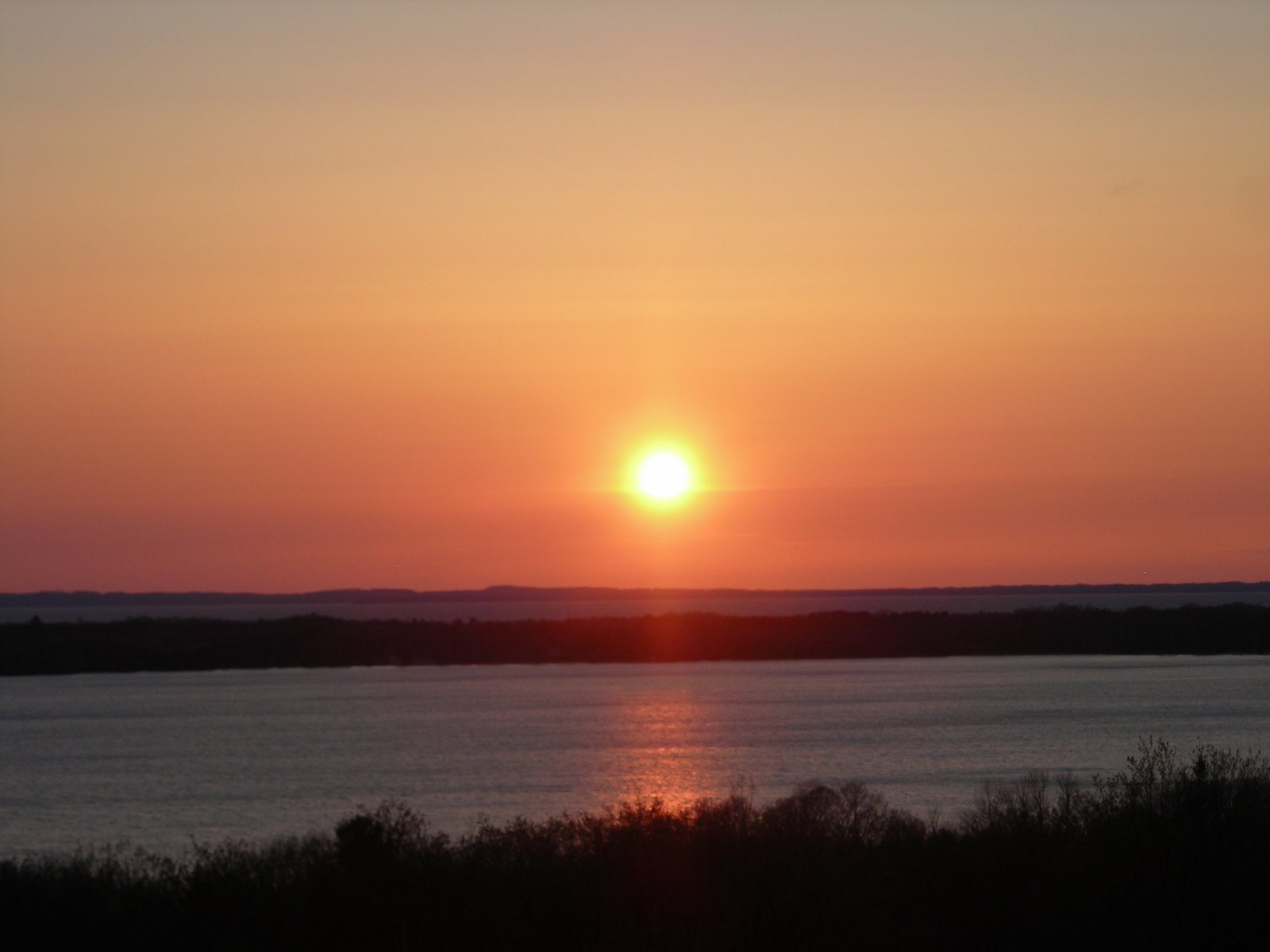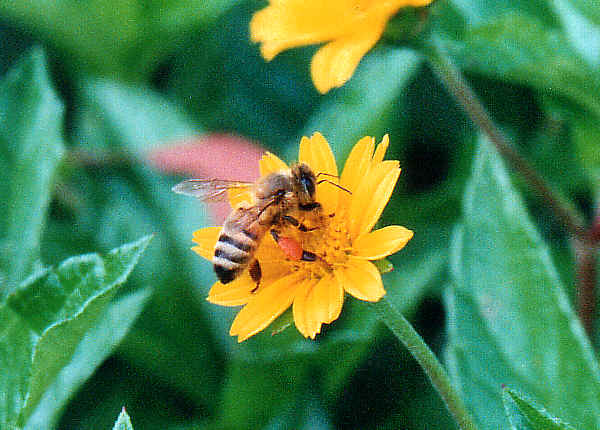Seasonal Cycles of Activities in Honey Bee ColoniesBy: Norbert M. Kauffeld 1(From Beekeeping in the United States)
Spring ActivitySwarming
A colony of honey bees comprises a cluster of several to 60,000 workers (sexually immature females), a queen (a sexually developed female), and, depending on the colony population and season of year, a few to several hundred drones (sexually developed males). A colony normally has only one queen, whose sole function is egg laying. The bees cluster loosely over several wax combs, the cells of which are used to store honey (carbohydrate food) and pollen (protein food) and to rear young bees to replace old adults.
The activities of a colony vary with the seasons. The period from September to December might be considered the beginning of a new year for a colony of honey bees. The condition of the colony at this time of year greatly affects its prosperity for the next year.
1Research entomologist, Science and Education Administration, Carl Hayden Center for Bee Research, Tuscon, Ariz. 85719.
In the fall a reduction in the amounts of nectar and pollen coming into the hive causes reduced brood rearing and diminishing population. Depending on the age and egg-laying condition of the queen, the proportion of old bees in the colony decreases. The young bees survive the winter, while the old ones gradually die. Propolis collected from the buds of trees is used to seal all cracks in the hive and reduce the size of the entrance to keep out cold air.
When nectar in the field becomes scarce, the workers drag the drones out of the hive and do not let them return, causing them to starve to death. Eliminating drones reduces the consumption of winter honey stores. When the temperature drops to 57° F, the bees begin to form a tight cluster. Within this cluster the brood (consisting of eggs, larvae, and pupae) is kept warm-about 93° F - with heat generated by the bees. The egg laying of the queen bee tapers off and may stop completely during October or November, even if pollen is stored in the combs. During cold winters, the colony is put to its severest test of endurance. Under subtropical, tropical, and mild winter conditions, egg laying and brood rearing usually never stop.
As temperatures drop, the bees draw closer together to conserve heat. The outer layer of bees is tightly compressed, insulating the bees within the cluster. As the temperature rises and falls, the cluster expands and contracts. The bees within the cluster have access to the food stores. During warm periods, the cluster shifts its position to cover new areas of comb containing honey. An extremely prolonged cold spell can prohibit cluster movement, and the bees may starve to death only inches away from honey.
The queen stays within the cluster and moves with it as it shifts position. Colonies that are well supplied with honey and pollen in the fall will begin to stimulatively feed the queen, and she begins egg laying during late December or early January-even in northern areas of the United States. This new brood aids in replacing the bees that have died during the winter. The extent of early brood rearing is determined by pollen stores gathered during the previous fall. In colonies with a lack of pollen, brood rearing is delayed until fresh pollen is collected from spring flowers, and these colonies usually emerge from winter with reduced populations. The colony population during the winter usually decreases because old bees continue to die; however, colonies with plenty of young bees produced during the fall and an ample supply of pollen and honey for winter usually have a strong population in the spring.
Top of pageSpring ActivityDuring early spring, the lengthening days and new sources of pollen and nectar stimulate brood rearing. The bees also gather water to regulate temperature and to liquefy thick or granulated honey in the preparation of brood food. Drones will be absent or scarce at this time of the year.
Later in the spring, the population of the colony expands rapidly and the proportion of young bees increases. As the population increases, the field-worker force also increases. Field bees may collect nectar and pollen in greater amounts than are needed to maintain brood rearing, and surpluses of honey or pollen may accumulate).
As the days lengthen and the temperature continues to increase, the cluster expands further and drones are produced. With an increase in brood rearing and the accompanymg increase in adult bees, the nest area of the colony becomes crowded. More bees are evident at the entrance of the nest. A telltale sign of overcrowding is to see the bees crawl out and hang in a cluster around the en trance on a warm afternoon.
Combined with crowded conditions, the queen also increases drone egg laying in preparing for the natural division of the colony by swarming. In addition to rearing workers and drones, the bees also prepare to rear a new queen. A few larvae that would normally develop into worker bees are fed a special gland food called royal jelly, their cells are reconstructed to accommodate the larger queen, and her rate of development is speeded up. The number of queen cells produced varies with races and strains of bees as well as individual colonies.
Regardless of its crowded condition, the colony will try to expand by building new combs if food and room are available. These new combs are generally used for the storage of honey, whereas the older combs are used for pollen storage and brood rearing.
Top of pageSwarmingWhen the first virgin queen is almost ready to emerge, and before the main nectar flow, the colony will swarm during the warmer hours of the day. The old queen and about half of the bees will rush en masse out the entrance. After flying around in the air for several minutes, they will cluster on the limb of a tree or similar object. This cluster usually remains for an hour or so, depending on the time taken to find a new home by scouting bees. When a location is found, the cluster breaks up and flies to it. On reaching the new location, combs are quickly constructed, brood rearing starts, and nectar and pollen are gathered. Swarming generally occurs in the Central, Southern, and Western States from March to June, although it can occur at almost any time from April to October.
After the swarm departs, the remaining bees in the parent colony continue their field work of collecting nectar, pollen, propolis, and water. They also care for the eggs, larvae, and food, guard the entrance, and build combs. Emerging drones are nurtured so that there will be a male population for mating the virgin queen. When she emerges from her cell, she eats honey, grooms herself for a short time, and then proceeds to look for rival queens within the colony. Mortal combat eliminates all queens except one. When the survivor is about a week old, she flies out to mate with one or more drones in the air. The drones die after mating, but the mated queen returns to the nest as the new queen mother. Nurse bees care for her, whereas prior to mating she was ignored. Within 3 or 4 days the mated queen begins egg laying.
During hot summer days, the colony temperature must be held down to about 93° F. The bees do this by gathering water and spreading it on the interior of the nest, thereby causing it to evaporate within the cluster by its exposure to air circulation.
During the early summer, the colony reaches its peak population and concentrates on the collection of nectar and pollen and the storage of honey for the coming winter. After reproduction, all colony activity is geared toward winter survival. Summer is the time for storage of surplus food supplies. The daylight period is then longest, permitting maximum foraging, although rain or drought may reduce flight and the supply of nectar and pollen available in flowers. It is during the summer that stores are accumulated for winter. If enough honey is stored, then the beekeeper can remove a portion and still leave ample for colony survival.
Monday, October 27, 2008
Subscribe to:
Post Comments (Atom)





No comments:
Post a Comment